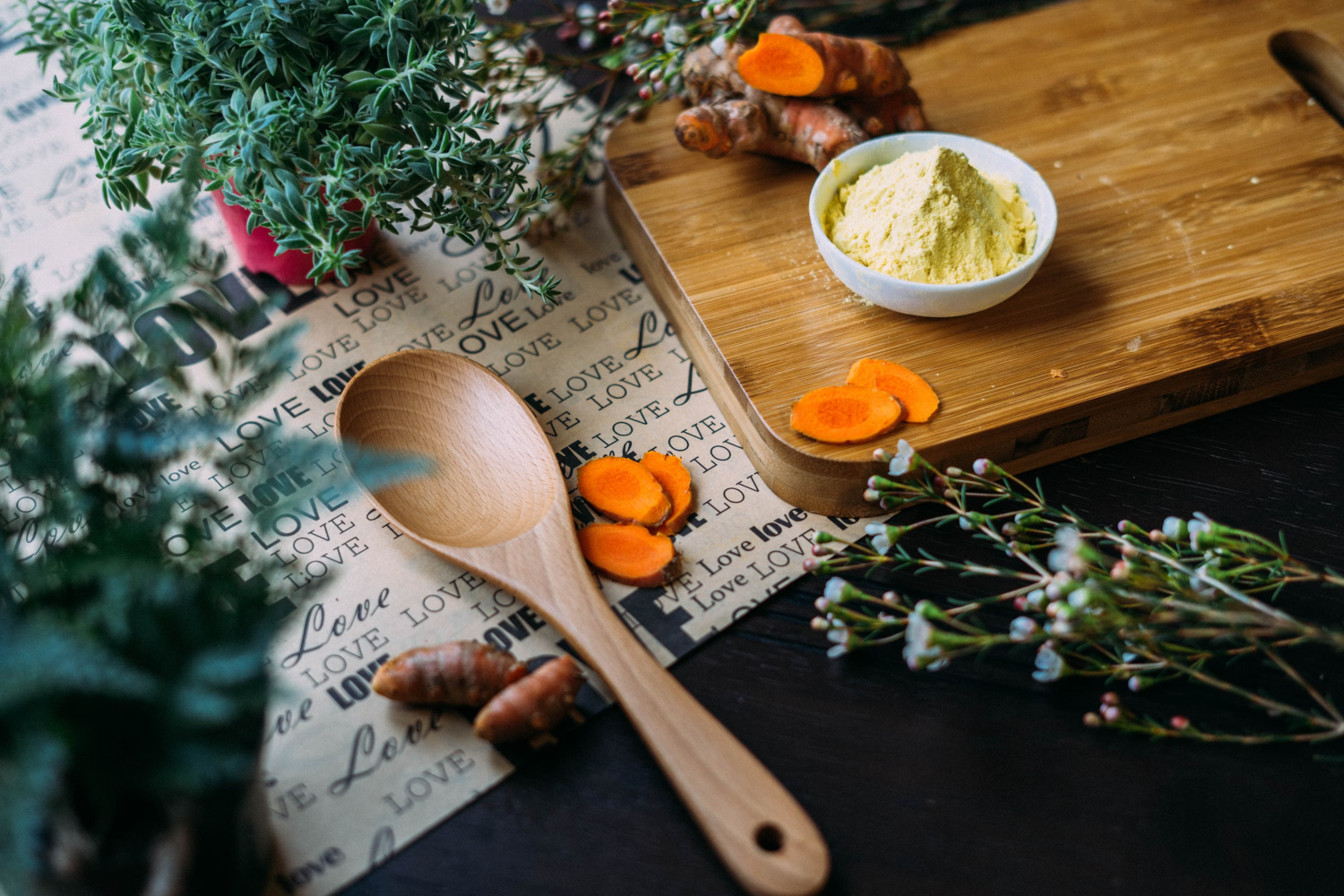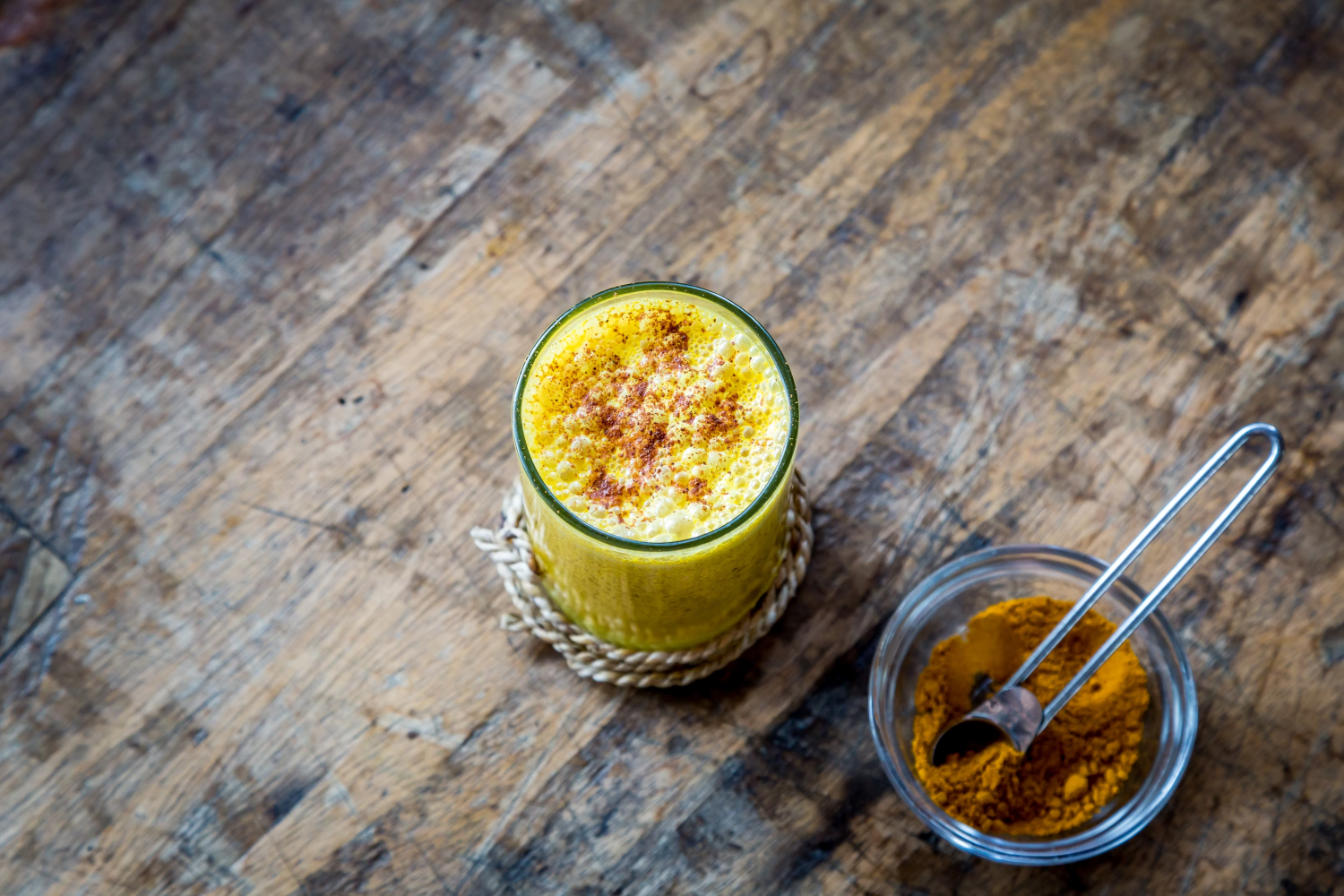Eating the turmeric plant: What is it good for and what should you be aware of?
Turmeric is primarily known for its strong yellow colour. However, many people are unaware that it is precisely the ingredient responsible for this colour that can also have a positive effect on health . This article shows why you should eat the turmeric plant, what you need to bear in mind and how to grow it in your own home.
How to grow and harvest the turmeric plant
Many people don’t realise it, but turmeric is very easy to grow yourself. However, a turmeric plant in the home usually has a decorative purpose: the pink to purple-coloured flowers are aesthetically pleasing. However, it is precisely this plant that also produces the healthy, yellow roots.
When can you plant turmeric? All year round – after all, it is a houseplant in this country. It originally comes from India and China, where the climatic conditions are very different.
The turmeric plant is also known by the following names:
Turmeric
Yellow ginger
Saffron root
For the turmeric plant to thrive in the home, it needs optimal conditions. It prefers a warm, semi-shaded location with high humidity. Regular spraying can be helpful. However, it can also be grown in a greenhouse or conservatory.
Temperatures between 18 and 22 °C are best for the turmeric plant. The turmeric plant also makes certain demands on the soil: the soil should be as rich in humus and nutrients as possible. Optimum conditions can be achieved by mixing two thirds potting soil with one third coarse sand. If you start with humus-rich soil, you can dispense with the annual application of fertiliser.
And when can you harvest turmeric? As soon as the plant is one metre tall and the above-ground parts of the plant have withered, you can dig up the rhizomes – the roots. This is usually the case in winter. The roots are then best washed under running water to remove the remaining soil.
They should be stored in a cool, dark and dry place. The ideal temperature is between 4 and 8 °C. Turmeric can also be stored in the fridge wrapped in dry cloths. Some people also freeze the tubers. Drying turmeric is also common practice, as it can easily be used to make turmeric powder for cooking or ingestion.

Why should you eat the turmeric plant?
The parts of the turmeric plant that can be eaten are the roots. The above-ground parts of the plant are not suitable for consumption. There is nothing to stop you from eating the leaves or flowers of the turmeric plant. However, they have no nutritional value worth mentioning and are not considered flavourful.
The roots, on the other hand, are said to have a number of positive properties:
Anti-inflammatory
Antibacterial
Antioxidant
Digestive
Detoxifying
The tuber is also said to have anti-cancer properties. The main ingredient curcumin is said to have a growth-inhibiting effect on cancer cells and thus bring about faster cell death. There have already been numerous studies on this topic. However, the extent to which eating the turmeric plant can help against cancer is still being investigated. Those affected should therefore never take turmeric on their own as an alternative therapy! The advice of a doctor should always be followed.
Thanks to the anti-inflammatory effect that the turmeric plant is said to have, it can alleviate numerous inflammatory processes. These include colds as well as inflammation of the skin and gastrointestinal tract. The tuber is also said to have a strengthening effect on muscle regeneration.
The antibacterial effects benefit people with burns and wounds. The turmeric plant is also used to treat insect bites.
Its antioxidant effect is also interesting. This means that turmeric can fight free radicals in the body. Free radicals are the harmful substances that attack the body’s cells and accelerate their ageing. Turmeric can also prevent blood clots and support the functioning of the cardiovascular system. Regular consumption is even said to reduce the risk of strokes and heart attacks.
As turmeric stimulates the production of bile acid and gastric juice, the root is also said to be able to reduce various digestive problems. These include, for example, flatulence or a feeling of fullness after eating. At the same time, liver enzymes are produced that combat toxins in the body.

Eat the turmeric plant and lose weight
Another reason why it may be worth eating the root of the turmeric plant is that it is said to help you lose weight. This is due to the numerous bitter substances it contains. These are said to stimulate bile production and help the body not only with detoxification but also with fat digestion.
Furthermore, it is the bitter substances in the turmeric plant that induce a quick and long-lasting feeling of satiety. Turmeric is therefore said to be able to prevent hunger pangs.
The curcumin it contains is also said to help with weight loss due to its anti-inflammatory effect. This is because metabolic disorders often lead to people being unable to keep their weight under control. These in turn are usually caused by inflammation.
Another positive effect: turmeric is said to regulate the metabolism. This increases performance and makes it easier to build muscle. As a result, the body burns more calories and nothing stands in the way of effective weight loss.
Of course, there are many other reasons why some people fail to lose weight. Among other things, illnesses can be behind the problem. It is therefore essential to clarify these issues in advance.
What should you bear in mind if you want to eat the turmeric plant?
It is often said that the root of the turmeric plant should not be eaten raw. Many people therefore assume that the rhizome is poisonous when unprocessed. However, this is not the case: Turmeric root – like ginger root – can be eaten raw without any adverse effect.
The peel is also edible. There is therefore no need to peel the turmeric root before eating. It only contains a lot of bitter substances, which can give dishes a bitter flavour. It is therefore up to you to decide how you want to eat the roots of the turmeric plant.
The turmeric plant can simply be grated or finely chopped and mixed into dishes. Where is turmeric usually found? The ingredient is used in many dishes. If you want to flavour your food with turmeric, you will mainly come across recipes from Asian cuisine.
Turmeric is a popular ingredient in various curries and turmeric rice is also very popular. It is also commonly used in lentil dishes. But the miracle tuber is also used in drinks. For example, turmeric can be infused into a healthy and beneficial tea. And “golden milk” is also touted as a healthy hot drink. This combines water, milk, ginger, turmeric and warming spices such as cinnamon.
However, there are a few things you should bear in mind if you want to eat the root of the turmeric plant. If consumed incorrectly, the turmeric plant can lead to undesirable side effects. These include, among other things
Dryness in the mouth
Stomach pain
Nausea
Flatulence
Anyone with a sensitive stomach or who does not yet know how their body reacts to the active ingredients in turmeric root should use it sparingly and approach it slowly. To counteract side effects due to an overdose of turmeric, it often helps to eat something before taking it.
The use of turmeric is not recommended for certain illnesses and complaints. These include gallstones and liver disease, for example. Anyone who is not sure whether turmeric is safe to take in their individual case should first consult a doctor.
There is an important tip for processing fresh turmeric tubers: be sure to wear gloves! The curcumin it contains is not only very healthy, but is also a strong colouring agent. So if you don’t want your hands to turn yellow after processing turmeric, you should protect them accordingly. However, the colouring agent is not harmful to the skin.
If you want to take turmeric in powder form rather than fresh, you can simply prepare a mixture of half a teaspoon to a whole teaspoon of turmeric powder, a little oil and pepper every day. Add the mixture to a large glass of water and drink it down quickly.
For a healthy person, the average daily dose is set at 8 g. However, this can vary depending on individual factors. However, this can vary depending on individual factors.

When and how should you take turmeric?
If you want to enjoy the health benefits of turmeric, you don’t necessarily have to eat the fresh root of the turmeric plant. Most supermarkets also sell turmeric powder as a spice. You can also easily buy dietary supplements containing curcumin.
These are often combined with other active ingredients to emphasise the positive properties of turmeric and make it easier to absorb. When buying such supplements, you should always pay attention to the quality . Manufacturers such as Kingnature offer high-quality and, above all, natural supplements. These have a high bioavailability, which means that the body can absorb them quickly and easily.
When taking dietary supplements, you should always be aware that they are not a substitute for a healthy diet. In addition, the dosage of turmeric is much higher, so you should follow the manufacturer’s instructions when taking it.
It is advisable to take turmeric supplements with a meal. This is not only because you can avoid possible side effects. Curcumin is fat-soluble and should therefore always be taken together with high-quality vegetable oil.
Anyone who is unsure about taking curcumin should ask a doctor for advice. Any doubts can be dispelled and questions answered competently.
Conclusion
Turmeric is said to have numerous positive properties. The root of the turmeric plant can simply be eaten, processed into hot drinks or added to various dishes as a spice. There are also dietary supplements that contain high doses of curcumin . Turmeric is considered to be health-promoting and versatile. Nevertheless, you should consult a doctor before taking it, especially if you have any pre-existing conditions or complaints.
